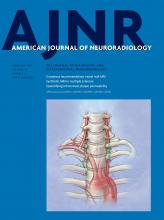Abstract
BACKGROUND AND PURPOSE: Rabbit elastase-induced saccular aneurysms have been commonly used for preclinical testing of endovascular devices, including flow diverters. However, all tested devices have been shown to be capable of aneurysm occlusion with this model. We aimed to create a more challenging model to test and discriminate among neurovascular devices of varying efficacies.
MATERIALS AND METHODS: With a surgical approach that included elastase infusion and balloon dilation, we attempted the creation of complex fusiform aneurysms in 16 rabbits, with standard saccular carotid aneurysms created in 15 other animals. Aneurysms were randomly allocated to one of the following treatments: flow diversion (n = 8), high-porosity stent (n = 6), double high-porosity stent (n = 5), and control (n = 6). Angiographic assessment and pathologic analyses were performed at 3 months.
RESULTS: Creation of complex fusiform and standard saccular aneurysms was successful in 12/16 and 13/15 attempts, respectively. All saccular (n = 4) or complex fusiform (n = 4) aneurysms treated with flow diverters were successfully occluded. Three of 3 saccular compared with 0/2 complex fusiform aneurysms were occluded by double high-porosity stents. One of 3 saccular and 0/3 complex fusiform aneurysms were occluded by a single high-porosity stent. Both aneurysm types shared the same pathologic findings when untreated: The aneurysm wall lacked an elastic layer and smooth muscle cells, while the lumen was lined with neointima of varying thickness. Neointimal coverage of the devices was complete when aneurysms were occluded, while leaks were always associated with aneurysm remnants.
CONCLUSIONS: Challenging fusiform aneurysms can be created in rabbits by using a surgical modification of the elastase method.
ABBREVIATIONS:
- FD
- flow diverter
- HPS
- high-porosity stent
- © 2017 by American Journal of Neuroradiology












